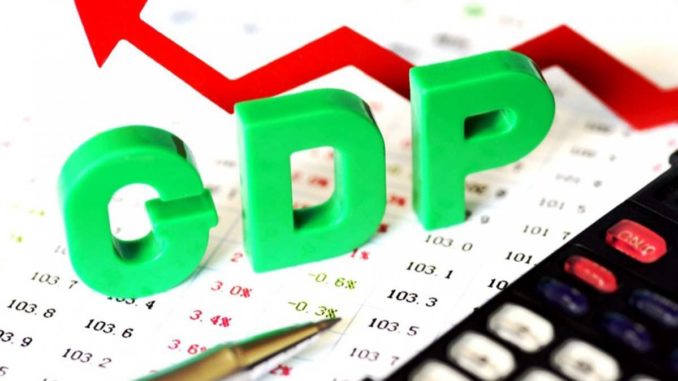
What the trend tells us is that the economy should see growth of a little under 2 per cent in the October-December period — bringing gross domestic product growth this year in at around 1.9 per cent. What even the trend numbers don’t tell us…is that this pace of growth isn’t enough. Not for our ability to service the economy’s increasingly large debt burden.
Both the anticipatory buzz ahead of the release last week, of output numbers for the economy for the July-September period, by the National Bureau of Statistics (NBS) and the excited conversations which followed, were not justified by the final numbers. In search of positives, there were enough in the NBS’ report. In the third quarter of this year, the economy grew by 1.81 per cent — more than it had in the preceding quarter, and better than it did around the same period last year.
Importantly, the main activity sectors of the economy (there are 46 of these) appeared to improve in the third quarter. Crop production, trade, and the telecommunications and information services sectors all grew in the third quarter. Trade’s performance is especially significant. Not only was it the second biggest activity sector in the economy, as proxy for consumer spending, its recovery (since the first quarter of 2016, this is the second time that this sector has grown) could mean that consumer confidence (along with spending) is on the mend.
Now, consumer spending matters a lot. Depending on who you ask, it accounts for anything between 67 per cent and 80 per cent of domestic output by end-use. The last recession cost households a lot in terms of welfare losses — job losses meant the cessation of earnings, even as rising domestic prices eroded both incomes and savings. There was always the danger that an economic recovery wasn’t going to fully pass through into higher consumer spending — household balance sheets needed to be fixed urgently. But once households felt comfortable spending, again, business investment had more space to grow. The prospects of stronger performance, going forward, should, therefore, mean that output over the coming quarters should be healthier still.
Poorly thought-out policies in the oil sector have continued to produce negative outcomes, including capacity constraints in the sector. Non-passage of the bill prescribing new governance arrangements for the sector is, without doubt, the single most important evidence of the lack of seriousness of successive governments.
Naysayers will, however, point out that the growth recorded in third quarter underperformed the much faster clip at which the economy was up in the first quarter. Thus, technically at least, over the last nine months, the economy has decelerated. Besides, we should worry that the crude petroleum and natural gas sector’s contribution to domestic output continues to shrink. And that the real estate sector, the fifth largest activity sector in the economy, contracted for the 11th consecutive quarter by September.
As with the numbers for the oil and gas sector, though, the third quarter output figures tell a far more nuanced story. Part of the goal of domestic policy since the early 1970s has been to reduce the economy’s dependence on oil export earnings. As a share of GDP, the oil sector is currently below 10 per cent, and is ranked fourth of the five activity sectors, which together account for two-thirds of aggregate domestic output. How significant, then, is the drop indicated by the third quarter numbers?
Poorly thought-out policies in the oil sector have continued to produce negative outcomes, including capacity constraints in the sector. Non-passage of the bill prescribing new governance arrangements for the sector is, without doubt, the single most important evidence of the lack of seriousness of successive governments. The economy is still as dependent on oil export earnings for much of its official spend as it has been all through the years. And so, we should worry that the oil sector is not doing as well.
At its best, output numbers on the economy are a snapshot of conditions prevailing as at when the NBS clicked the shutters. Ordinarily, the resulting numbers speak to yesterday’s events.
Yet, the implementation of reforms that diversify the economy away from the oil sector remain key, both to addressing our oil-addiction, and to the achievement of broad-based growth and development. Alas, the numbers for the third quarter were never going to tell us how far this goal has been met or by how much the economy is in breach of it. At its best, output numbers on the economy are a snapshot of conditions prevailing as at when the NBS clicked the shutters. Ordinarily, the resulting numbers speak to yesterday’s events.
Rather than this one episode, far better to look to the economy’s growth trend, in search of answers to questions around the economy’s outlook. What the trend tells us is that the economy should see growth of a little under 2 per cent in the October-December period — bringing gross domestic product growth this year in at around 1.9 per cent. What even the trend numbers don’t tell us, on their own, is that this pace of growth isn’t enough. Not for our ability to service the economy’s increasingly large debt burden. Not for the levels of investment required for the economy’s growth and development. Not for the near-term task of significantly reducing the economy’s burden of poverty. And, definitely, not with our population continuing to grow at near 3 per cent annually.
Uddin Ifeanyi, journalist manqué and retired civil servant, can be reached @IfeanyiUddin.
END

Be the first to comment